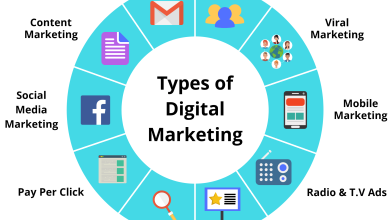

From the moment you open your eyes in the morning till you go to bed at night, you are surrounded by content. What you see on the Internet, what you read in the newspapers, what you see on hoardings, labels, books, e-paper, radio, television — everything is content.
However, content created without a strategy or definition will lack context and will be reduced to something meaningless and unimportant. Content creation, strategy, and marketing are important aspects of digital marketing. Nonetheless, the concept of content, especially in the digital landscape, is quite limited.
Most people, including business owners, consider only blog posts, guest posts, and whitepapers as content. However, such a skewed understanding will not only create a vacuum in content creation but will also affect the quality and quantity of content strategies developed for promotion and distribution.
So, it is important to understand that graphics, websites, reviews, product descriptions, and mission statements are also considered content. The first step of content creation is to come up with a content strategy. People often think that content strategy is content marketing. They cannot be more wrong. While both are two sides of the same coin and are quite interdependent, content strategy and marketing are not interchangeable concepts.
It is important to understand the difference between these concepts to establish a brand name. A clear understanding will allow you to use both concepts properly to create content that is not only engaging but also ranks well in SERPs.
What is Content Strategy?
This is the ultimate guide you need to follow while creating content. This is the spirit of your content, always telling you and your team what to include and what to exclude. Whenever in doubt, you refer to the strategy to stick to the path. A content strategy gives uniformity to all your content to ensure that they are all on the same page.

There are many aspects to a content strategy. Let’s discuss them in detail to understand how to create a well-rounded content strategy.
Elements of a Content Strategy:
Purpose of Content Creation:
The very first step of content creation is to know why you are doing it in the first place. What do you wish to achieve with this content? Who do you want to reach? What do you want to promote? Do you want to educate or raise awareness? You have to define the targets, goals, and reasons for the content before you start.
This is step is very important because everything that follows depends on this big “WHY”?
The Right Time:
The title itself is quite self-explanatory. However, allow me to elaborate. The best way to tackle the timing scenario is to create a content calendar for the first six months or the entire year. Make sure that this calendar has the major holidays marked out.
Now you have to identify the seasons, cycles, and find out the holidays around when you have to market out your content. While holidays can be easily identified, use tools like Google Trends to mark out the cycles and seasons.
Doing thorough research of when your competitors publish content can also prove to be beneficial. Timing is of the utmost importance, especially during the HOLIDAYS. Start planning your content at least a fortnight before it is to be published, to get ample time to publish the content right before the holidays.
Your Content Team:

This decision depends entirely on you especially if you are a small business. You can go solo or can hire freelancers to create your content. You can also outsource your entire workload to a digital marketing company to handle content creation, strategizing, and marketing.
If you are going to create content on a niche subject it’s best to take the help of an expert to get the facts right and also to make the content more credible. However, if that expert happens to be you, then that is an ideal situation.
Identify Your Target Audience:

Imagine discussing stock portfolios with a 12-year-old. Doesn’t seem like a very good idea, right? That’s because you are talking to the wrong person, about a subject that they don’t relate to or understand.
Identifying a target audience ensures the long-term survival of any business. Without this knowledge, you have no idea to who you are offering the products and services. Getting to know who your target audience is can help enhance your marketing strategies.
These are some of the basic elements that you might consider to develop a 360-degree content strategy. Apart from these the below-mentioned factors can also help in devising a plan:
-
- Content promotion channels
- Types of content
- Uniform branding across all channels or developing one concept
A content strategy cannot be planned overnight. However, considering the above-mentioned factors can help speed up the process. Build your strategy based on these elements and then we move on to content creation.
It’s Time for Content Marketing to Do the Work
All content marketing plans are a part of the bigger content strategy. However, content strategy is not a part of content marketing. As the name suggests, content marketing is nothing but a well-planned approach that focuses on the creation and distribution of relevant and valuable content to a defined target audience to inform, attract, and retain them. The goal of all content marketing strategies is to build brand value and earn profits.
A successful content marketing strategy not only helps in achieving the sales target but also assists in building and retaining long-term meaningful relationships with the patrons.
Different Channels of Content Marketing
There are numerous ways in which content can be marketed. Here are a few common types of content marketing techniques used by savvy digital marketers:
-
- eBooks
- Infographics
- Social Media Campaigns
- Case Studies
- White Papers
- Blog and Guest Posts
- Reviews, Testimonials, and Feedback
- Webinars and Podcasts
- Product Descriptions
- Email Newsletters
Why Do You Need to Do Proper Content Marketing?
Content marketing, undoubtedly, comes with several long-term benefits and can be a worthy investment. It is one of the most effective marketing strategies in practice today. Here are some of the benefits of putting time and money into content marketing strategies:
-
Higher Rank in SERPs:
Google indexes every blog post published on your website. The more high-quality content you publish on your website, the higher will your website rank, thanks to Google’s indexing. Targeting long-tail keywords and topics that are frequently searched by potential customers will bring in more traffic and business.
-
On-site Content Informs and Promotes:
On-site content is not only useful for increasing ranking in Google search but also helps in promoting your brand, educating your current and potential customers, and retaining patrons.
The more time you invest in content marketing, the more high-quality content you will generate for your website. Through these pieces of content, you can not only talk about the services and products you offer but can also help potential customers familiarize themselves with your brand and offerings.#
Engaging content will compel your patrons to spend more time on the website, and that is always a good thing to look forward to.
-
Referral Traffic:
This one depends entirely on how much time and effort you invest in guest posting. Guest posting is an essential part of most content marketing strategies, as you can include links back to your website. Choose a site with high traffic, and just one unique, well-written guest post can bring in hundreds of new visitors to your website.
-
Social Media Followers:

Sharing published content on social media channels gives more exposure to your business and brings in patrons. It also helps in building a community of loyal customers, which is essential to establish a brand name.
Social media allows the users to share your content with their friends and family that can increase your follower count. With time and consistent social media marketing, you will gain more and more followers, as well as higher website traffic.
-
Higher Chances of Conversion:
The main objectives of publishing content on the digital landscape are to inform, educate, engage, and add value to the reader. If you are done with these objectives, you can use some of the space to present your products and services subtly but in a unique way.
The proper presentation can help increase the chances of conversion from just readers to actual customers easily. The trick here is to tactfully pitch the products and services without turning the copy into an advertisement.
-
Close-Knit Customer Relationship:
While brand reputation is very important in building credibility with the customer, good content can also help build authority and generate trust, which serves the same purpose. Some of the great copies have been responsible for increasing the loyalty among customers, helping them relate with the brand.
Proper, source-backed, and skillfully written content will not only educate customers but will push them to see you as a reliable source for information. This will not only guarantee their loyalty and trust but might also convert them from readers to buyers.
Are Content Marketing and Content Strategy Two Sides of the Same Coin?
SEMrush in its 2020 report stated that content marketing and content strategy are now an indispensable part of digital marketing. Robert Rose, the founder, and chief strategy officer of The Content Advisory states that “The content marketer addresses the ‘whys,’ the content strategist addresses the ‘hows,’ and together they work out the ‘whats’ and ‘wheres’.”
While these two terminologies are interconnected, they overlap a lot and are often used as a single unit due to a poor understanding of the concepts. In simple words, content marketing focuses more on how to create and distribute content with the end goal of converting readers into paying customers.
Content strategy, on the other hand, treats usable content more like an asset and manages it efficiently till the end of its shelf life. A proper content strategy ensures that the content created is following your business objectives and goals. The governance of content, in general, is mapped out in a content strategy.
Content marketing and content strategy cannot survive without one another. If content strategy is the train, content marketing is the boxcars that are carrying your products and services to the defined target audience.
So, sit down, think, plan your content properly, and prosper!




